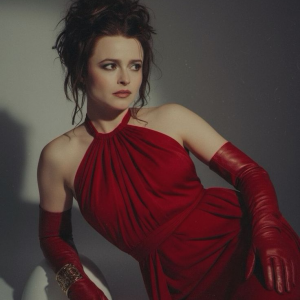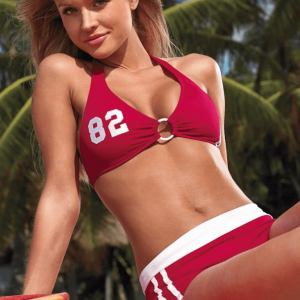BMW is one of the world’s most prestigious automotive brands, known for crafting luxury vehicles that combine precision engineering with high-performance capabilities. The brand’s unmistakable reputation speaks of innovation, elegance, and driving excellence. But have you ever wondered what BMW actually stands for? While the sleek design and roaring engines may capture your attention, the story behind those three letters is just as compelling.
In this article, we will unravel the meaning behind BMW, its rich history, the truth about its iconic logo, and how the brand transformed from aircraft engines to the luxury automotive giant we know today.
What Does BMW Really Stand For?

The acronym BMW stands for “Bayerische Motoren Werke”, which is German for “Bavarian Motor Works”. As the name suggests, BMW’s origins lie in Bavaria, a region in southern Germany, with its headquarters in Munich. The name reflects the company’s deep-rooted ties to Bavarian engineering excellence and its commitment to crafting powerful engines, whether for aircraft or automobiles.
However, BMW wasn’t always known by this name. In its early years, the company was actually called Bayerische Flugzeugwerke AG, which translates to “Bavarian Aircraft Works”. This title pointed to its original focus: manufacturing engines for airplanes during World War I. Despite eventually transitioning into automobiles, the brand’s legacy in aviation technology has left an indelible mark on its identity.
The Misunderstood BMW Logo: More Than Just a Propeller
The BMW logo is among the most recognized automotive symbols in the world, but its meaning has often been misconstrued. Many people mistakenly believe that the blue and white circular emblem represents a rotating propeller, symbolizing the brand’s aviation past. This interpretation was popularized by a 1929 BMW advertisement that showcased an airplane propeller adorned with the company’s logo.
However, the truth behind the logo is a bit different. The blue and white segments actually represent the colors of the Bavarian flag, which features a blue-and-white checkered pattern. At the time the logo was created, German laws prohibited the direct use of state symbols for commercial purposes. In a clever workaround, BMW designed the logo to subtly incorporate the Bavarian colors while still paying homage to its roots.
Though the propeller myth persists to this day, the real story behind the BMW logo is a testament to the brand’s Bavarian pride and ingenuity.
BMW’s Role in World War II: A Difficult Chapter
BMW’s history isn’t without its challenges. During World War II, the company was heavily involved in the German war effort, producing engines for military aircraft. BMW’s expertise in aviation helped supply the German Luftwaffe with high-powered engines, cementing its role as a crucial player in the conflict.
However, the end of the war brought about significant changes. Following Germany’s defeat, BMW was prohibited from producing aircraft engines, and the company faced considerable financial and industrial challenges. Post-war restrictions forced BMW to pivot, and for a time, they even dabbled in manufacturing household items and bicycles.
But as the 1950s approached, BMW began to regain its footing by focusing on automobile production. This shift led to the development of the sporty and luxurious cars that would define the brand in the coming decades.
The Birth of BMW’s Automotive Legacy

It wasn’t until the 1960s that BMW truly hit its stride in the automotive industry. During this period, BMW started producing smaller, sporty cars that were both accessible and high-performing. Models like the BMW 2002 helped the brand gain international attention and solidify its reputation as a premium car manufacturer.
The 2002 model, in particular, became an icon of its time, blending performance with style in a way that few other cars could match. This success laid the foundation for BMW’s future as a brand synonymous with luxury and innovation.
BMW’s transformation from an aviation-focused company to an automotive giant was driven by a deep understanding of market needs. As the demand for performance-oriented vehicles grew, BMW responded by delivering cars that combined cutting-edge technology with an exhilarating driving experience.
BMW Today: A Global Symbol of Luxury and Innovation

Today, BMW stands as one of the most successful and respected car manufacturers in the world. With over two million vehicles sold annually, it ranks as the ninth-largest automaker globally. From the timeless 3 Series to the futuristic i8, BMW continues to lead the charge in automotive innovation.
But BMW is not just about producing fast cars. The brand has also made significant strides in sustainability, investing heavily in electric and hybrid technologies. Models like the BMW i3 and BMW i8 represent the future of driving, with their focus on reducing emissions without sacrificing performance.
In addition to its advancements in eco-friendly technologies, BMW remains committed to providing luxurious and dynamic driving experiences. Whether you’re driving through city streets or cruising down the highway, every BMW vehicle promises a journey defined by precision, comfort, and power.
BMW’s Iconic Status: More Than Just Bavarian Motor Works

While BMW may stand for “Bavarian Motor Works,” the brand’s legacy extends far beyond its name. BMW has evolved from a wartime engine manufacturer into a symbol of automotive excellence and luxury. Through its history, BMW has faced numerous challenges, but each time, it has emerged stronger, continually innovating and setting new standards for performance.
From the early days of aircraft engines to the modern era of electric cars, BMW has never stopped pushing the boundaries of what’s possible. The brand’s enduring popularity can be traced back to its ability to seamlessly combine heritage with innovation, delivering vehicles that are as thrilling to drive as they are reliable.
BMW Is More Than Just a Name
Next time you see that iconic BMW logo gleaming on a car, remember it represents more than just luxury and speed. It’s a symbol of Bavarian craftsmanship, a rich history intertwined with both aviation and automobiles, and a future focused on innovation and sustainability.
BMW stands for “Bayerische Motoren Werke,” but the brand has become much more than just an abbreviation. It represents a legacy of excellence, precision, and the relentless pursuit of perfection in everything they create. Whether on the racetrack or the open road, BMW vehicles are engineered to provide drivers with the ultimate driving experience, making it clear why the brand continues to be a leader in the global automotive market.


